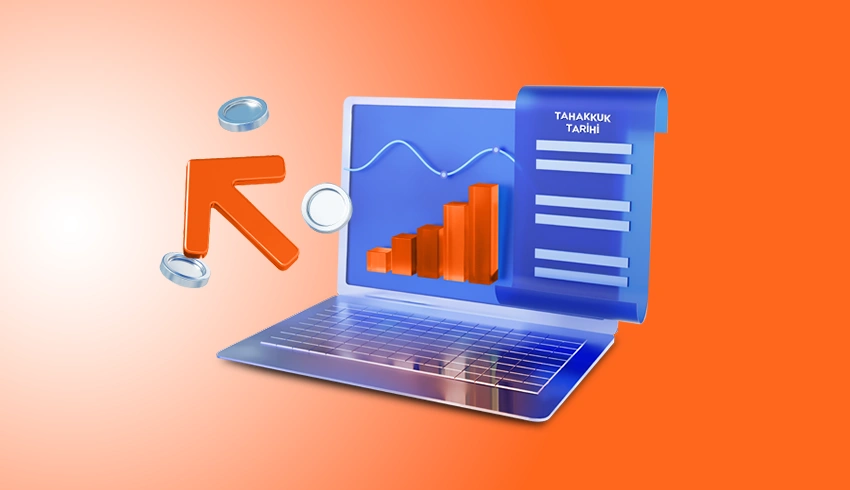“Managing Without Data Is Like Driving on a Road at Night with Your Headlights Off.”
The vast majority of small and medium‑sized enterprises (SMEs) still view digitalization merely as “setting up a website.” Yet in today’s business world, decisions can no longer be made on intuition alone; they must be driven by data, analysis, and evidence.
As we approach 2025, companies that continue to make decisions without data are akin to vehicles speeding down a highway in the dark with their headlights off. The walls they’ll collide with aren’t just financial—they risk losing out on competition, customers, employees, reputation, and ultimately, sustainability.
In this article, we’ll explore just how vulnerable data‑shy SMEs are, which opportunities they’re missing, and the new threats they’ll face in 2025.
Digitalization and Data Utilization Among SMEs in Turkey
According to OECD 2023 data, the share of SMEs that have taken basic steps toward digital transformation in OECD countries averages between 60 % and 70 %. Industry reports from organizations such as Vodafone Business and TÜSİAD show a similar rate—around 70 %—for Turkey. This figure encompasses simple applications like websites, social media, and electronic invoicing (e‑invoicing).
However, the adoption rate of advanced digital tools—such as data‑driven decision making, customer relationship management (CRM), and enterprise resource planning (ERP) systems—remains below 25 %. This indicates that, although many SMEs possess digital infrastructure, it has not been integrated into their strategic decision‑making processes.
Sources for OECD Reports:
https://www.oecd.org/en/publications/financing-smes-and-entrepreneurs-2024_fa521246-en.html
https://www.oecd.org/en/publications/oecd-sme-and-entrepreneurship-outlook-2023_342b8564-en.html
Sectoral Comparisons:
Manufacturing: This group of SMEs makes the largest digital investments. Data‑driven inventory and cost management are widespread (around 30 %).
Retail: Data‑based customer tracking and e‑commerce are prominent; however, decision‑making processes still aren’t supported by data.
Services: Operations generally remain at an Excel‑level, with limited automation.
Example Comparison:
Mr. Ahmet’s Textile Workshop: Orders are tracked in a manual ledger. By the end of the season, a TRY 12,000 surplus in fabric inventory emerges. Because sales data isn’t analyzed, the most in‑demand product type is misforecast. And with collections handled manually, monthly revenue deviates by 10 %.
Ms. Zeynep’s Café Chain: Inventory levels, customer counts, and sales trends are monitored in Power BI. In the same quarter, this yields a 15 % increase in revenue. Additionally, with Finrota’s Digital Finance Tools, all collections are tracked centrally, making cash flow fully predictable. Loyalty data—integrated into the CRM—enables highly personalized campaigns.
Risks Facing SMEs in 2025 and Beyond
For businesses that eschew data, not only growth but even survival is becoming increasingly challenging. Digitally advanced competitors, rapidly evolving customer expectations, increasingly complex regulations, and transparent financial systems now make data‑driven management mandatory for every SME. Absent this, these enterprises become the weakest link in both competition and compliance. Here are the chief risks SMEs will face in this era:
Data‑Equipped Competitors
They’re not just making faster decisions—they’re redefining the playing field with tools like automated pricing algorithms, real‑time sales‑data campaign optimization, and customer‑behavior forecasting. Trying to compete with these rivals using traditional methods is like a manpower‑driven factory racing against robotic production.
Expectation of Personalization
Data‑literate companies can tailor content, products, promotions, and payment options to specific customer segments. Metrics such as “data‑driven businesses achieve 30 % higher revenue per customer” make this advantage measurable. Email open rates? They’re twice as high for organizations that personalize.
Efficiency Losses
In data‑deprived firms, the most common inefficiencies are excess inventory, shift overlaps, and misreading customer needs. With digital tools, a business can handle 20 % more volume with the same headcount. In data‑driven SMEs, time and labor are planned far more precisely.
Challenges in Financial Access
Banks now lend based on data, not guesswork. Finrota gives SMEs full transparency into collection cycles, revenue trends, and cash‑flow dynamics that influence credit scores—enabling more effective credit‑access planning.
Tightening Regulations
KVKK (Personal Data Protection Law): If you intend to analyze customer data, you must first ensure it’s stored securely. Failing to keep proper records can incur fines.
e‑Invoice / e‑Archive: From 2025 onward, broad, industry‑agnostic compliance applies. Businesses still operating on paper face heightened audit risk.
Practical Steps to Implement Data‑Driven Management for SMEs
Digitize Your Collection Processes
Manual collection methods can be time‑consuming and prone to errors. With Finrota’s Netahsilat solution, you can collect payments online from dealers, subscribers, and customers. This system supports unlimited POS integrations and advanced collection methods, enabling fast and secure payment processing.
Manage Bank Account Transactions from a Single Panel
Tracking transactions separately across multiple banks is complex and inefficient. Finrota’s Netekstre product lets you monitor all company bank accounts and corporate credit‑card movements in one centralized dashboard, saving you time and consolidating your financial data.
Centralize Your POS Transactions
Rather than juggling physical and virtual POS systems independently, use Posrapor to view and manage every POS transaction on a single screen. This unified approach improves sales‑data analysis and enhances transparency across your financial workflows.
Accelerate Bulk Payments
Instead of manually executing payments to multiple recipients, leverage the Bulk Payment System (TÖS) to process all disbursements in one swift operation. This not only boosts operational efficiency but also frees up valuable time.
Aggregate All Financial Data in One Dashboard
Finrota’s NAP360 platform aggregates every financial movement—payments, receipts, transfers—into one holistic view. With a comprehensive data foundation at your fingertips, you can make strategic decisions with greater confidence and clarity.
Data‑driven management isn’t expensive; making the wrong decisions is.
By adopting Finrota’s suite of digital finance solutions, you’ll streamline your financial operations, cut costs, and reclaim precious time.
The Importance of Data‑Driven Management for SMEs
For SMEs today, “managing by gut” is no longer sustainable—it’s a liability. As economic volatility and regulatory demands intensify in 2025 and beyond, businesses that rely solely on intuition will find it increasingly difficult to compete and comply.
Data‑based decision‑making isn’t just the domain of large corporations. With the right tools, accurate insights, and a straightforward implementation strategy, SMEs can also flex their digital muscles and secure a competitive edge.



